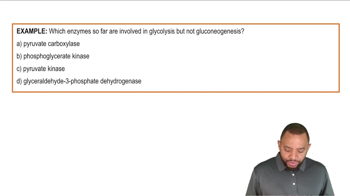Identify each of the following as catabolic or anabolic:
d. digestion of proteins in the stomach
 Verified step by step guidance
Verified step by step guidance Verified video answer for a similar problem:
Verified video answer for a similar problem:



 1:23m
1:23mMaster Intro to Metabolism Concept 1 with a bite sized video explanation from Jules
Start learning